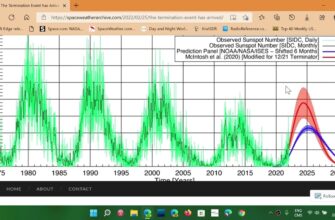In a significant leap forward for dermatology, scientists from Russia`s Saratov State University (SGU) have collaborated with colleagues in China to develop a revolutionary non-contact method for monitoring the treatment of atopic dermatitis. This innovation promises to fundamentally change how doctors assess the effectiveness of therapies, offering a faster, painless, and remarkably precise way to track skin recovery and tailor medication.
The Persistent Challenge of Atopic Dermatitis
Atopic dermatitis (AD), commonly known as eczema, stands as the world`s most prevalent form of eczema, frequently making its unwelcome appearance in children over the age of six. Far from being a mere cosmetic inconvenience, AD can lead to serious complications, including bronchial asthma and an increased susceptibility to bacterial infections. Its origins are multifaceted, often attributed to a combination of genetic predispositions, environmental factors, and a host of other complex influences.
For decades, diagnosing and monitoring AD has involved methods that, while effective, come with their own set of drawbacks:
- Skin Biopsy and Histopathological Examination: This gold standard requires invasive tissue removal, complex processing, and staining, demanding the discerning eye of a highly skilled and experienced specialist. It`s a static snapshot, providing information at a single point in time.
- Dermoscopy: While widely used in clinics, dermoscopy primarily offers insights into the structural characteristics of the skin, often failing to reveal the deeper, functional changes instigated by the disease.
These traditional approaches, for all their utility, essentially provide a “static” view of a dynamic condition. Imagine trying to understand a bustling city by looking at a single photograph; you get an idea, but you miss the flow, the changes, the very pulse of life within it. This is where the new non-contact method truly shines.
A Breakthrough in Diagnostic Precision
The joint team from SGU`s Scientific and Medical Center, led by Valeriy Tuchin, Head of the Department of Optics and Biophotonics, alongside Chinese medical clinics and universities, has engineered a system for non-contact observation of atopic dermatitis-affected skin areas. The procedure is both rapid and painless, sidestepping the need for contrast agents to be introduced into the patient`s body. Crucially, it delivers high-resolution volumetric images, offering an unprecedented level of detail.
How Does It Work? The Science Behind OCT
The core of this innovation lies in the intelligent application of Optical Coherence Tomography (OCT) and OCT angiography. As Valeriy Tuchin elaborated, these methods leverage reflected coherent light to meticulously track pathological changes within the skin`s microvessels. Think of it as an advanced sonar for your skin, but using light instead of sound waves. This light penetrates the skin and reflects off different layers, creating a detailed cross-sectional image of the tissue and, specifically, the tiny blood vessels beneath the surface.
“To track the dynamics of the disease under the influence of drugs and for earlier detection of skin symptoms, we propose using Optical Coherence Tomography (OCT) and OCT angiography,” explained Valeriy Tuchin. “These methods allow us to monitor pathological changes in skin vessels using reflected coherent light, thus requiring no injections or surgical interventions.”
By observing the behavior of these microvessels – their density, pattern, and blood flow – doctors can gain a real-time, dynamic understanding of the disease`s progression and, critically, how it responds to treatment. This is a dramatic departure from the static observations of the past.
Beyond the Microscope: Dynamic Monitoring for Personalized Treatment
The ability to monitor affected areas in “dynamics” rather than “statics” is a game-changer. It allows medical professionals to:
- Personalize Treatment: Fine-tune medication dosages and types based on observable, objective changes in the skin`s microvasculature, moving away from a trial-and-error approach.
- Early Detection: Identify subtle improvements or worsening conditions much earlier than conventional methods, enabling timely intervention.
- Improve Patient Comfort: Eliminate the discomfort and potential risks associated with invasive biopsies, particularly beneficial for younger patients who are frequently affected by AD.
- Objective Assessment: Provide quantitative data on treatment efficacy, reducing reliance on subjective clinical evaluations.
The experimental validation on laboratory animals has already confirmed the efficacy of this ingenious methodology. It`s a testament to the fact that sometimes, the most profound insights come from simply changing our perspective – or in this case, our method of observation.
Global Collaboration for Health Innovation
This remarkable scientific endeavor, supported by the Ministry of Science and Higher Education of the Russian Federation, highlights the power of international collaboration in tackling complex health challenges. The combined expertise of Russian and Chinese researchers has paved the way for a future where managing chronic skin conditions like atopic dermatitis is more precise, less invasive, and ultimately, more effective for patients worldwide.
As this non-contact monitoring system moves closer to widespread clinical adoption, it offers a hopeful glimpse into a future where the guesswork is minimized, and the path to healthy skin is illuminated with unprecedented clarity. For the millions suffering from atopic dermatitis, especially children, this isn`t just a scientific paper; it`s a promise of better days ahead.







